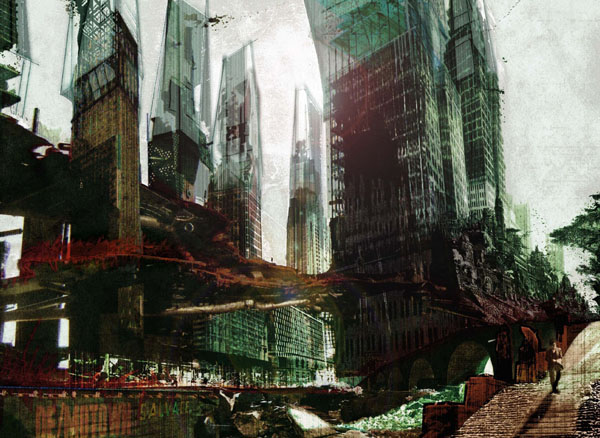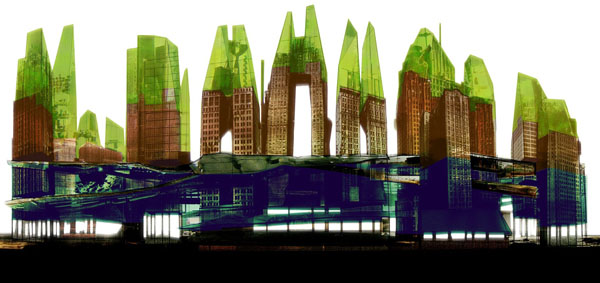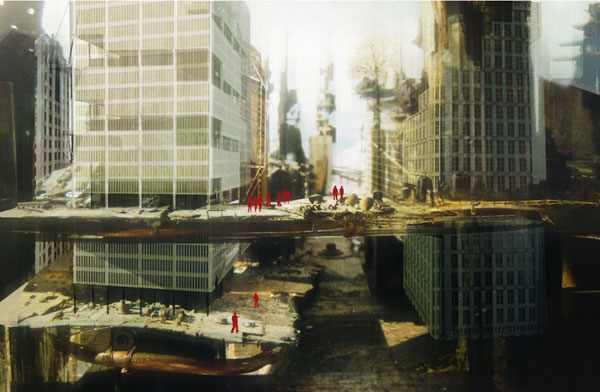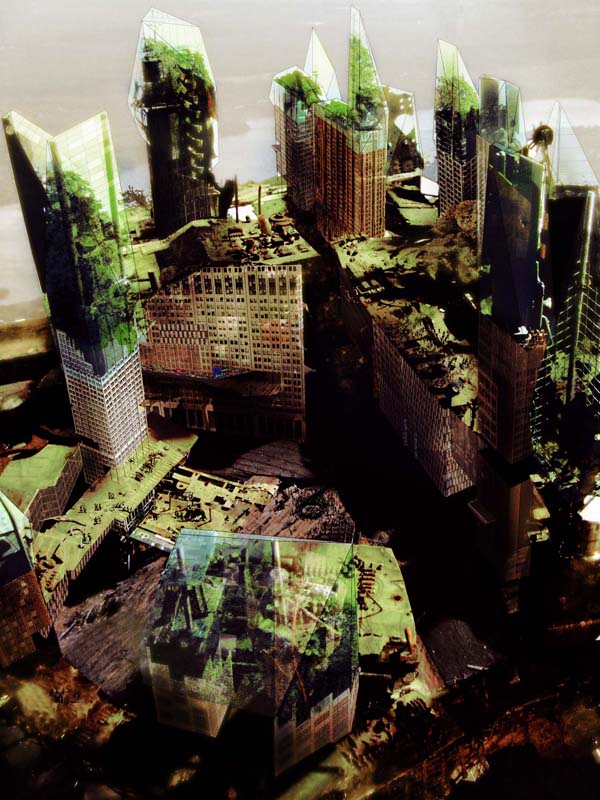Zagreb Architects Society (DAZ) is launching a series of annual cycles of conceptual architectural competitions, defined by programming tasks proposed by the elected jurors, renowned Croatian and international practicing architects. The annual cycle consists of four conceptual architectural competitions. The annual theme serves as an input parameter for all four conceptual competitions, which address four different program tasks aligned with the main theme. The theme is determined by the guest curator. In the year 2010/2011, The Think Space Competition theme deals with the notion of borders (geopolitical, ecological, urban and moral scenarios).
Demotown: A Retroactive Arcology for Detroit, designed by Jesse Foster Honsa and Gregory John Mahoney for the Urban Border Competition, uses the city of Detroit as a found object (rather than a blank canvas), forming the basis for a retroactive arcology that redefines urban density and circulation. The central building district, a skyscraper-graveyard of immense stratified floor area, is renewed and transformed by elevated thoroughfares and programmatic diversity into a compact, self-sustaining urban entity. As with many industrial cities, the massive scale of Detroit’s defunct commercial, industrial, and residential infrastructure is the greatest impediment to its renewal. The proliferation of abandoned urban space has created a new frontier, one that possesses existing structural resources that may support further development. By considering Detroit as an urban found-object, the design proposes the utilization of the existent city as natural resource that can be exploited to reshape the landscape and reinvent the ways in which humans settle their environment. This approach to Detroit is seen by the authors as the forerunner to a dramatic change in the structure of the post-industrial American city.
This year’s first juror Shohei Shigematsu, the director of OMA in New York, stated:
“…De/Motown projects a vision for Detroit with adaptive re-use strategies that utilize the industrial city’s existing production facilities. The proposal also suggests two topics that are of personal interest to me: post-crisis architecture and thinning…As a result of this ground manipulation, the project provides numerous opportunities for public and recreation space. The renderings were beautiful and suggestive, though they perhaps drew too heavily on glamorized depictions of derelict future cities prevalent in many Hollywood films today. Clear sections, axos and diagrams illustrated sectional diversity and the viaduct circulation strategy.”



















